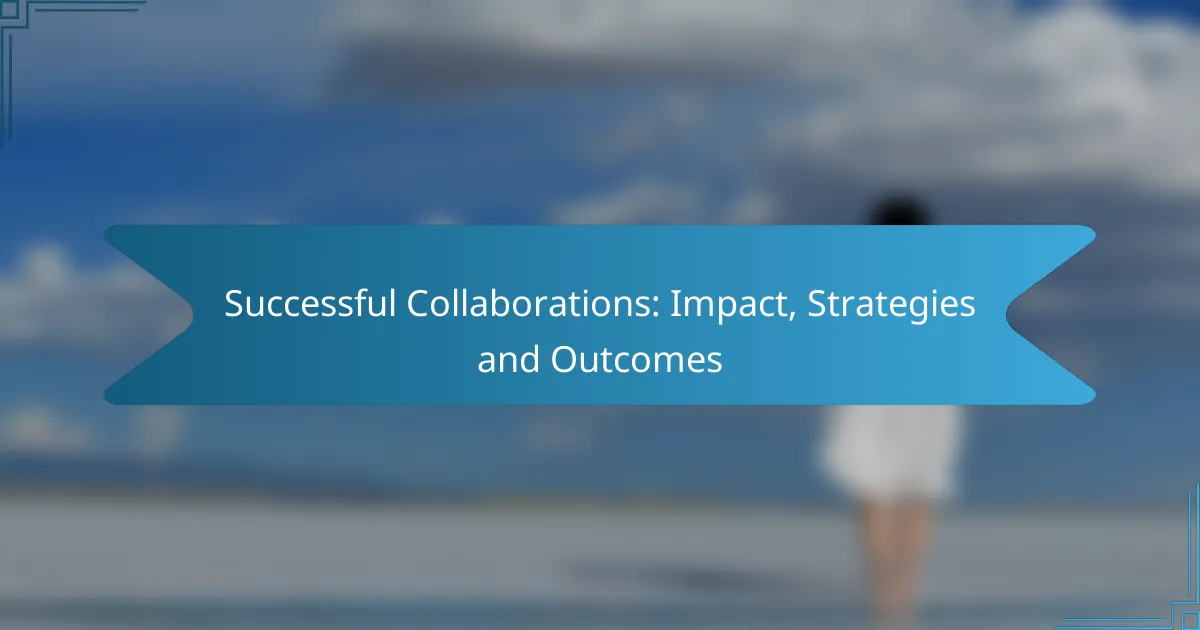Leveraging resources effectively is crucial for organizations aiming to enhance efficiency and improve outcomes. By optimizing resource allocation, fostering collaboration, and utilizing technology, businesses can achieve significant advantages such as reduced costs and a stronger market position. Ultimately, strategic resource management leads to better performance, increased profitability, and a competitive edge in today’s dynamic environment.

What Are Effective Strategies for Leveraging Resources?
Effective strategies for leveraging resources involve optimizing allocation, fostering collaboration, utilizing technology, making data-driven decisions, and ensuring continuous training. These approaches enhance efficiency, reduce waste, and improve overall outcomes in various organizational contexts.
Resource allocation optimization
Resource allocation optimization focuses on distributing resources—such as time, money, and personnel—efficiently to maximize output. Organizations should regularly assess their resource usage and adjust allocations based on project priorities and performance metrics.
One effective method is the use of a priority matrix, which helps identify high-impact tasks that require immediate attention. This ensures that critical projects receive the necessary resources while minimizing waste on less important activities.
Collaboration with industry partners
Collaborating with industry partners can significantly enhance resource leveraging by pooling expertise, technology, and networks. Strategic partnerships allow organizations to share costs and risks associated with projects, leading to improved innovation and market reach.
For example, a small tech startup might partner with a larger firm to access advanced tools and platforms, enabling faster product development. Establishing clear communication channels and shared goals is crucial for successful collaboration.
Utilizing technology for efficiency
Technology plays a vital role in leveraging resources by automating processes and improving productivity. Tools such as project management software and data analytics can streamline operations and provide insights into resource utilization.
Implementing cloud-based solutions can reduce overhead costs and enhance flexibility, allowing teams to access resources from anywhere. Organizations should evaluate their technology needs regularly to ensure they are using the most effective tools available.
Data-driven decision making
Data-driven decision making involves using quantitative and qualitative data to inform resource management strategies. By analyzing performance metrics and market trends, organizations can make informed choices that align with their goals.
Establishing key performance indicators (KPIs) helps track resource effectiveness and identify areas for improvement. Regularly reviewing these metrics ensures that decisions are based on current data rather than assumptions.
Continuous training and development
Continuous training and development are essential for maximizing resource potential. Investing in employee skills not only enhances individual performance but also improves overall organizational efficiency.
Organizations should create a culture of learning by offering workshops, online courses, and mentorship programs. This not only keeps the workforce adaptable to changes but also fosters innovation and engagement, ultimately leading to better resource utilization.

What Benefits Can Be Gained from Resource Leveraging?
Resource leveraging can lead to significant advantages for organizations, including improved efficiency, reduced costs, and a stronger market position. By strategically utilizing existing resources, businesses can maximize their potential and achieve better outcomes.
Increased operational efficiency
Leveraging resources effectively can streamline operations, allowing organizations to complete tasks more quickly and with fewer errors. This can involve optimizing workflows, utilizing technology, or reallocating personnel to areas where they can have the most impact.
For example, a company might implement project management software to enhance collaboration and track progress, resulting in faster project completions. Regularly reviewing processes for inefficiencies can also help identify areas for improvement.
Cost reduction
By leveraging existing resources, businesses can significantly lower operational costs. This can be achieved through better inventory management, reducing waste, or negotiating better terms with suppliers.
For instance, a retailer might analyze sales data to optimize stock levels, reducing excess inventory costs. Additionally, outsourcing non-core functions can free up internal resources and reduce overhead expenses.
Enhanced competitive advantage
Resource leveraging can create a competitive edge by enabling businesses to respond more swiftly to market changes and customer demands. By maximizing the use of available assets, companies can innovate and differentiate themselves from competitors.
For example, a tech firm that utilizes its existing research and development capabilities can launch new products faster than rivals. This agility can attract more customers and increase market share.
Improved employee satisfaction
When resources are leveraged effectively, employees often experience less stress and greater job satisfaction. Streamlined processes and clear roles can lead to a more positive work environment, where employees feel valued and empowered.
For instance, providing employees with the right tools and training can enhance their productivity and engagement. Regular feedback and recognition can further boost morale, leading to lower turnover rates and a more committed workforce.

How Do Outcomes of Resource Leveraging Impact Businesses?
The outcomes of resource leveraging significantly impact businesses by enhancing efficiency and maximizing returns on investment. By effectively utilizing available resources, companies can achieve better performance, increased profitability, and a competitive edge in the market.
Higher revenue growth
Leveraging resources can lead to higher revenue growth by optimizing existing assets and reducing operational costs. For instance, a company that utilizes technology to automate processes can enhance productivity, leading to increased sales without a proportional rise in expenses.
Businesses should focus on identifying underutilized resources and reallocating them strategically. This might involve investing in training for employees to improve their skill sets or adopting new technologies that streamline operations.
Stronger market positioning
Effective resource leveraging strengthens market positioning by enabling businesses to differentiate themselves from competitors. Companies that harness their unique resources, such as specialized knowledge or proprietary technology, can create distinctive value propositions that attract customers.
To enhance market positioning, businesses should conduct thorough market analyses to identify gaps and opportunities. This approach allows them to tailor their offerings and marketing strategies, ensuring they meet specific customer needs while leveraging their strengths.
Better customer engagement
Leveraging resources can improve customer engagement by facilitating personalized interactions and enhancing service delivery. For example, utilizing customer data analytics allows businesses to understand preferences and behaviors, enabling targeted marketing and tailored experiences.
To boost customer engagement, companies should invest in customer relationship management (CRM) systems that integrate various data sources. This investment helps in tracking customer interactions and feedback, ultimately leading to more meaningful relationships and increased loyalty.

What Criteria Should Be Considered When Choosing Resources?
When selecting resources, it’s crucial to evaluate their alignment with your business goals, cost-effectiveness, and scalability potential. These criteria help ensure that resources not only meet current needs but also support future growth and sustainability.
Alignment with business goals
Resources should directly support your organization’s strategic objectives. For instance, if your goal is to enhance customer service, investing in advanced CRM software may be a priority. Assess how each resource contributes to your overall mission and vision.
Consider conducting a gap analysis to identify areas where resources can fill deficiencies. This approach helps prioritize investments that will yield the highest impact on your business outcomes.
Cost-effectiveness
Evaluating the cost-effectiveness of resources involves analyzing both upfront and ongoing expenses. Look for resources that provide the best value for money, balancing quality and price. For example, a higher initial investment in a robust software solution may save costs in the long run through increased efficiency.
Utilize a cost-benefit analysis to compare different options. This can include direct costs, maintenance fees, and potential savings from improved processes. Avoid resources that may seem cheap initially but incur high hidden costs over time.
Scalability potential
Scalability is essential for accommodating future growth without significant additional investment. Choose resources that can easily adapt to increasing demands, such as cloud-based solutions that allow for flexible usage based on your needs.
When assessing scalability, consider whether the resource can handle increased workloads or if it requires substantial upgrades. A scalable resource can save time and costs associated with frequent replacements or major overhauls.

What Are Common Challenges in Resource Leveraging?
Common challenges in resource leveraging include resistance to change, lack of clear communication, and insufficient training. These obstacles can hinder the effective utilization of available resources, ultimately impacting organizational performance.
Resistance to change
Resistance to change is a significant barrier when leveraging resources effectively. Employees may feel threatened by new processes or technologies, leading to reluctance in adopting changes that could enhance productivity.
To address this challenge, organizations should foster a culture of openness and encourage feedback. Providing clear explanations of the benefits of resource leveraging can help alleviate fears and promote acceptance among staff.
Implementing gradual changes rather than sweeping reforms can also ease the transition. For example, introducing new tools in phases allows employees to adjust without feeling overwhelmed, thereby increasing the likelihood of successful adoption.



